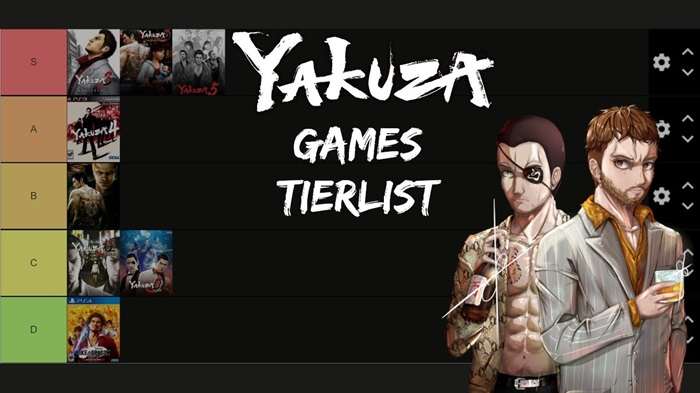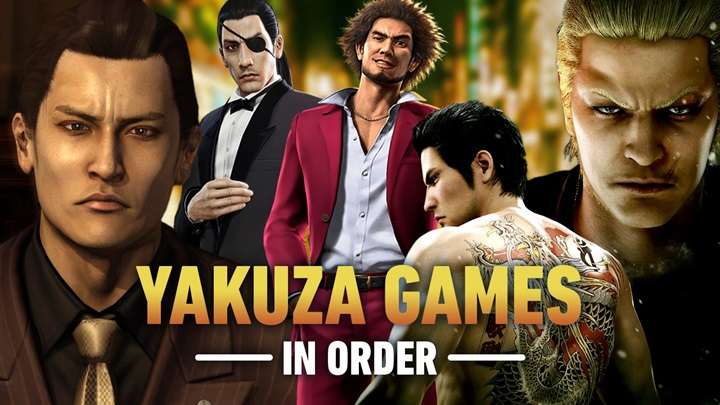The Yakuza series, developed by Sega, is a beloved franchise that combines beat-’em-up gameplay, compelling crime drama narratives, and a rich open-world setting. Known for its intense combat mechanics, memorable characters, and a sprawling narrative arc, Yakuza has grown into one of the most influential gaming series in recent years. Whether you’re new to the franchise or a seasoned fan wanting to revisit the order of the games, this guide provides a comprehensive look at the Yakuza games in chronological order of release and timeline.
A Brief History of the Yakuza Series
The Yakuza series (known as Ryū ga Gotoku in Japan) debuted in 2005, capturing the lives of gangsters navigating the dangerous and often morally gray world of the Japanese underworld. While the original game was initially a cult hit, its popularity grew over time due to its strong storytelling, detailed world-building, and unique blend of action and narrative-driven gameplay. The series has since expanded into multiple sequels, spin-offs, and remakes, making it one of Sega’s flagship properties.
Mainline Yakuza Games in Release Order

The primary Yakuza series follows the story of Kazuma Kiryu, a former yakuza member trying to leave his past behind while constantly getting drawn back into the criminal underworld. These are the main titles that make up the core narrative of the series.
1. Yakuza (2005)
- Platforms: PlayStation 2
- Timeline Placement: 1995 and 2005
The first Yakuza game introduces us to Kazuma Kiryu, a loyal member of the Tojo Clan who ends up taking the blame for a crime he didn’t commit. After spending ten years in prison, Kiryu is released, only to find himself in a new and even more dangerous world. As he navigates the criminal landscape, he becomes a protector of a young girl named Haruka.
This original installment sets the foundation for the series with its action-packed combat system, rich storyline, and a vivid portrayal of the fictional district of Kamurocho, based on Tokyo’s Kabukicho.
2. Yakuza 2 (2006)
- Platforms: PlayStation 2
- Timeline Placement: 2006
A direct sequel to the first game, Yakuza 2 focuses on Kiryu’s attempt to broker peace between the Tojo Clan and their rivals, the Omi Alliance. The game dives deeper into the power struggles of organized crime families and showcases Kiryu’s growth from an ex-yakuza into someone who genuinely wants to better the situation for his friends and allies. This sequel also expands the game world to include Osaka’s Sotenbori district, giving players a taste of different locales.
3. Yakuza 3 (2009)
- Platforms: PlayStation 3
- Timeline Placement: 2009
Set in Okinawa, Yakuza 3 shifts the focus from Kiryu’s life in the underworld to his new role as the caretaker of an orphanage. However, trouble is never far away, and Kiryu finds himself once again embroiled in a conflict between the yakuza and powerful political forces. This game introduces a more introspective side to Kiryu and marks the first Yakuza title on the PlayStation 3, with improved graphics and an expanded combat system.
4. Yakuza 4 (2010)
- Platforms: PlayStation 3
- Timeline Placement: 2010
Yakuza 4 is notable for expanding the roster of playable characters beyond Kiryu, introducing three new protagonists: Shun Akiyama, a loan shark; Taiga Saejima, a prison escapee; and Masayoshi Tanimura, a crooked cop. Each character has their own unique fighting style and storyline, all of which converge into a larger narrative that once again ties into the fate of the Tojo Clan. The game also added depth to Kamurocho, introducing more vertical exploration across rooftops and underground areas.
5. Yakuza 5 (2012)
- Platforms: PlayStation 3
- Timeline Placement: 2012
In Yakuza 5, Sega pushes the boundaries of the series even further by introducing five playable characters and five distinct cities across Japan, including Fukuoka, Sapporo, and Nagoya. Each character has their own storyline, and the game boasts a much larger scale compared to previous titles. Kiryu is now a taxi driver in Fukuoka, trying to lead a quiet life, but circumstances once again draw him into a nationwide criminal conflict. The game is lauded for its expansive narrative and variety of side activities.
6. Yakuza 0 (2015)
- Platforms: PlayStation 3, PlayStation 4, PC
- Timeline Placement: 1988
Yakuza 0 is a prequel to the original game, set during Japan’s economic boom in the 1980s. It explores the early years of Kiryu and another fan-favorite character, Goro Majima. This game offers players a glimpse into how these characters rose through the ranks of the yakuza and what shaped their personalities. The 80s aesthetic, alongside a variety of nostalgic activities like real estate management and karaoke, makes this entry one of the most beloved in the series. The combat system was also expanded, allowing characters to switch between multiple fighting styles.
7. Yakuza Kiwami (2016)
- Platforms: PlayStation 3, PlayStation 4, PC
- Timeline Placement: 1995 and 2005
Yakuza Kiwami is a remake of the original Yakuza (2005), built on the same engine as Yakuza 0. It revamps the combat, graphics, and mechanics to fit modern consoles while also adding new content to flesh out the story, including more side activities and an extended “Majima Everywhere” system where Goro Majima can challenge Kiryu in surprise battles throughout the game.
8. Yakuza 6: The Song of Life (2016)
- Platforms: PlayStation 4, PC
- Timeline Placement: 2016
Marking the final chapter in Kiryu’s saga, Yakuza 6 sees the Dragon of Dojima investigating a mystery surrounding Haruka, who has fallen into a coma after an accident. Kiryu, now in his late 40s, is once again pulled into the violent world of yakuza, but this time with a more personal motivation to protect his adoptive family. With a new combat system, refined graphics thanks to the Dragon Engine, and a more emotional story, Yakuza 6 serves as a fitting end to Kiryu’s journey.
9. Yakuza Kiwami 2 (2017)
- Platforms: PlayStation 4, PC
- Timeline Placement: 2006
Following the success of Yakuza Kiwami, Sega released Yakuza Kiwami 2, a full remake of Yakuza 2, also using the Dragon Engine from Yakuza 6. The game not only overhauls the graphics but also expands on the story with additional side quests and a campaign starring Goro Majima, adding more depth to the narrative and the world.
10. Yakuza: Like a Dragon (2020)
- Platforms: PlayStation 4, PlayStation 5, PC, Xbox
- Timeline Placement: 2019
Yakuza: Like a Dragon marks a significant departure from the traditional Yakuza formula. Rather than focusing on Kiryu, the game introduces a new protagonist, Ichiban Kasuga, and shifts from the series’ signature beat-’em-up combat to a turn-based RPG system. Despite the gameplay changes, the game retains the heart of the series, with its focus on story, character development, and the complex relationships between criminal organizations.
Kasuga’s journey is a refreshing take on the Yakuza universe, and while the gameplay change was controversial at first, Like a Dragon was well-received by fans and critics alike, proving that the franchise could evolve while staying true to its roots.
Related Post:
Exploring “Run 3 Unblocked Games”: A Cosmic Adventure
The Ultimate Guide to Tomb Raider Games in Order: A Journey Through Lara Croft’s Legacy
The Cast of Love Island Games: Meet the Vibrant Personalities Behind the Show
Yakuza Spin-Offs and Side Games
Alongside the mainline games, the Yakuza series has spawned numerous spin-offs, expanding the lore and gameplay into different genres and time periods.
1. Yakuza: Dead Souls (2011)
- Platforms: PlayStation 3
- Timeline Placement: Non-canon
Set in an alternate reality where Kamurocho is overrun by zombies, Yakuza: Dead Souls takes a bizarre and fun detour from the main story. The game introduces gunplay as its core mechanic, deviating from the series’ usual hand-to-hand combat. Although not part of the core canon, it’s a unique and entertaining experience for fans of the series.


